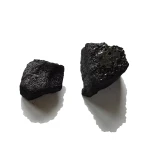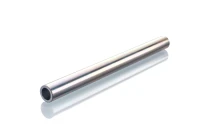- What is the function of a catalyst in the fuel cell system?
- What are the characteristics of a catalyst used in a fuel cell?
- What are examples of different catalysts used in fuel cells?
- What is catalyst loading?
- What factors affect the performance of catalysts?
- What are the failure modes of a hydrogen fuel cell catalyst?
- What are different methods for analyzing the potential lifetime of a fuel cell catalyst?
- List of certain suppliers of a hydrogen fuel cell catalyst
Browse fuel cell catalyst from leading suppliers on our marketplace!
What is the function of a catalyst in the fuel cell system?
A catalyst is any substance that increases the rate of reaction in a chemical reaction without undergoing any permanent chemical change itself. This process is known as catalysis. A hydrogen fuel cell catalyst eases the reaction of oxygen and hydrogen (i.e the fuel). Fuel Cell catalysts are normally porous and rough in texture in order to provide more surface area to the reactants oxygen and hydrogen. The catalyst layers are among the most important parts inside the fuel cell since it is on their surface that the chemical reaction occurs. The higher the surface area available the higher the rate of reaction. These porous catalyst layers can be manufactured by pyrolysis which involves heating the source materials above their decomposition temperatures in a suitable environment.
Various types of hydrogen catalysts are used in different types of fuel cells. The catalysts are among the primary cost determining factors in the manufacture and application of fuel cells. Also they can be vulnerable to particular gases or other substances which the fuel cell is exposed to and therefore additional measures may be necessary to protect the catalyst from decomposition or detrimental deformation.
What are the characteristics of a catalyst used in a fuel cell?
- The hydrogen fuel cell catalyst does not change during the chemical reaction it is accelerating.
- The catalyst in hydrogen fuel cells help break the molecules into protons and electrons.
- Only a small amount of a catalyst is required.
- Catalyst do not change the equilibrium constant of the reaction.
- The catalyst does not make impossible reactions possible and it does not start the reaction.
- The catalyst shows maximum activity at a specific temperature known as its optimum temperature.
What are examples of different catalysts used in fuel cells?
- PEM Fuel Cell catalyst – In a PEM (Proton Exchange Membrane) fuel cell, inert rare earth metals are used as catalysts. Platinum is the most commonly used catalyst material and its use has been one of the factors determining cost for the manufacture and application of PEM fuel cells. Platinum as a catalyst is however susceptible to decomposition in the presence of carbon monoxide, so exposing it to this gas permanently reduces the amount of catalytic material available to accelerate the reaction in the fuel cell. This is called fuel cell poisoning and is a known risk for fuel systems. Recent developments introducing other materials such as molybdenum carbide into the membrane structure or introducing an additional reactor have led to a significant reduction of this risk.
- Alkaline Fuel Cell catalysts – In Alkaline Fuel Cells (AFC), non-precious metals are used as catalytic material. These metals are usually nickel, porous nickel and nickel alloys.
- PAFC (Phosphoric Acid Fuel Cell) catalysts – In a Phosphoric acid fuel cell, platinum is used as a catalyst. The economic effects of using this catalyst are similar to those described above for PEM fuel cells.
- MCFC (Molten Carbonate Fuel Cell) catalysts – The anode and cathode are Nickel based in Molten carbonate fuel cells. The nickel on the anode and the cathode provides catalytic properties in this fuel cell type. The high working temperature eliminates the necessity of a precious metal catalyst.
- SOFC catalyst – Nickel is the catalyst accelerating the reaction in Solid Oxide Fuel Cells. This catalyst also needs to be protected from degradation through sulphur and from becoming coarse (forming granulates) as this reduces the surface area available to accelerate the reaction. To avoid the growth of nickel granules the nanomaterial YSZ (Yttria stabilized Zirconia) is used.
- DMFC (Direct Methanol Fuel Cell) catalyst – In direct methanol fuel cells platinum and ruthenium are used as catalysts. There is research ongoing to add iron and nickel to the catalysts with a view to further decreasing the cost and performance of this type of fuel cells.
- DLFC (Direct liquid fuel fuel cell) catalyst – In this type of fuel cell, platinum is used as main catalyst. To avoid carbon monoxide poisoning, a secondary element such as ruthenium, tin, tungsten or rhenium can be introduced.
What is catalyst loading?
Loading refers to the application process of the catalyst on the fuel cell membrane or area of interaction with the reactants. It is typically done in 2 ways:
- Sock loading
- Dense loading
Efficiency gains in loading of the hydrogen fuel cell catalyst have decreased the costs of fuel cells in the last 20 years. This has helped to improve cell power density and durability. It has, for example, also enabled the more efficient use of Platinum as a catalyst.
In 2021, platinum loading at the anode in a PEMFC was approximately 0.025 mg/cm2, which is a significant reduction in comparison to approximately 1 mg/cm2 achievable in the year 2000. This has decreased the production cost of fuel cells accordingly. Given that the price of platinum is between 40 to 60 $/mg, this can lead to a manufacturing cost reduction of about 800 USD in a fuel cell road vehicle.
What factors affect the performance of catalysts?
- Sintering/dealloying of catalyst
- Corrosion of catalyst support (substrate)
- Mechanical stress
- Contamination
- Change in hydrophobicity of the materials
What are the failure modes of a hydrogen fuel cell catalyst?
- Loss of activation
- Conductivity loss
- Decrease in transport rate of reactant
- Loss of reformate tolerance
- Decrease in control of water management
What are different methods for analyzing the potential lifetime of a fuel cell catalyst?
- Potential cycles
- Acid washing
- Temperature elevation
- Permissible fuel/oxidant contaminates
List of certain suppliers of a hydrogen fuel cell catalyst
These manufacturers offer a hydrogen fuel cell catalyst:
- 3M
- Amalyst Ltd
- Cataler Corporation
- Clariant
- ENY-Mobility GmbH
- Genport srl
- Heraeus
- HIAT
- James Cropper
- Johnson Matthey
- Nisshinbo Holdings
- Riogen Inc.
- Sainergy Fuel Cell India Pvt Ltd
- SiM Composites
- Tanaka Precious Metals
- TFP Hydrogen Products & Technical Fibre Products Ltd. (belongs to James Cropper)
- Umicore
Last update: 15.1.2023










